A mammoth aluminium and steel-clad structure worth €390 million stands on the edge of Paris, home to the city’s new Philharmonie concert hall, but bearing the unfortunate burden of being ‘disowned’ by its architect, Jean Nouvel.
Earlier this month, Nouvel took legal action to renovate 26 areas in the building to his original designs. Until these amendments are made, his name and image are to be removed from all references to the project. This followed from his much-reported boycotting of the building’s opening, which he had claimed to be “too early” for an unfinished building that had not had a chance to test the acoustics of its centerpiece – the concert hall.
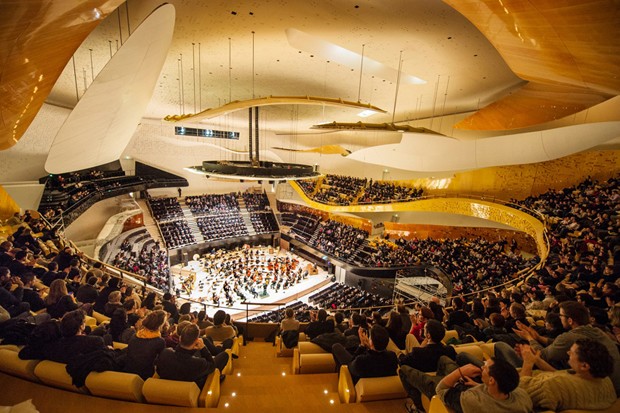
Interior of the 2,400-seat concert hall. Image: William Beaucardet. Source: designboom
For Nouvel to take such a strong stance on the acoustics of a concert hall is, of course, understandable. As architecturally ‘great’ as the hall might be, it is automatically discounted if it doesn’t perform. But, getting acoustics right in a range of other applications, from hospitals to classrooms, is just as important if a ‘cause health’ design model is adopted.
The ‘cause health’ model developed by Canadian architect Tye Farrow is rooted in the idea that the best test for design is whether buildings and spaces allow people to thrive mentally, socially and physically. As a result, design expectations must be adjusted so that the optimisation of occupants’ physical and mental well-beings is a priority for architects and building designers.
Good acoustics sit amidst a variety of intuitive design elements that contribute to health-causing environments, such as the use of quality natural light and timber products, and getting it wrong can have an adverse impact on end-users.
For example, research has shown that poor acoustics in learning environments can negatively affect students and lead to cognitive fatigue, reduced access to speech and language acquisition skills, increased anxiety and poorer learning outcomes. With the redesign of traditional school spaces to meet new generation learning environments, ensuring sound acoustics becomes even more of an imperative.
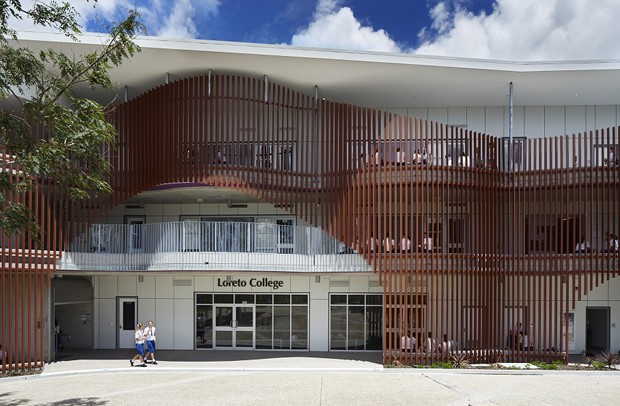

LORETO COLLEGE CRUCI BUILDING by ThomsonAdsett embraces the new educational design typology of extending learning beyond the four walls of a classroom. However, the need for agile spaces that could morph into larger spaces created unique sound and noise challenges, which were resolved through the provision of acoustic ceiling tiles, and wrapping the carpet up the wall surfaces for acoustic absorption and comfort.
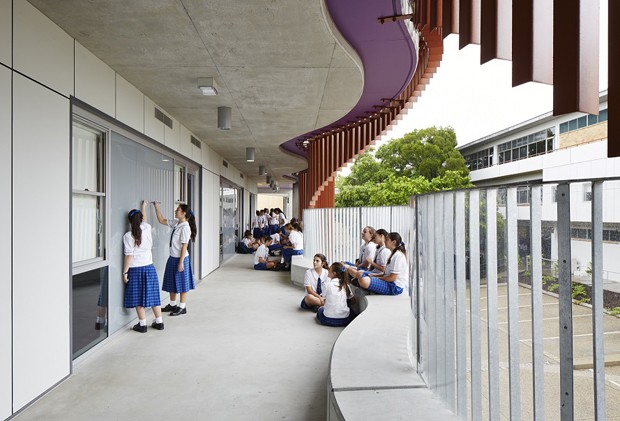
Acoustics is also relevant to healthcare environments, which typically feature a “hive of activity” and can be challenging in terms of acoustic management, says Andrew Jackson, Director at SAS International:
“Hospitals and healthcare buildings…include a multitude of different spaces with a wide range of privacy requirements, and noise levels can vary greatly, depending on the department, users and activities taking place. Neglecting to manage the acoustics in these spaces can have a negative effect on patient comfort and slow down recovery.”
Jackson points also to the 2008 Ampt, Harris and Maxwell research paper, ‘The Health Impacts of the Design of Hospital Facilities on Patient Recovery and Wellbeing, and Staff Wellbeing’, which suggests that good acoustic design not only improves patient comfort, dignity, privacy and sleep patterns, but also staff comfort and privacy, which leads to efficiency and accuracy gains.
“There are also other acoustic considerations unique to healthcare facilities as medical equipment may be noisy in operation,” he adds. “For example, magnetic resonance imagers (MRI) generate noise levels between 80 to 120 dB(A), and many items of medical instrumentation rely on the use of audible alarms, especially in an intensive care unit (Samuel Clarke, Acoustic design approach for hospitals, 2011). To achieve ‘a bit of quiet’ can prove to be difficult, but it is not impossible.”

While the World Health Organisation (WHO) recommends average sound levels not to exceed 30 A-Weighted Decibel (dBA) in general hospital areas, levels of 65-83 decibel (dB) have been recorded, a report called ‘Noise in the ICU’ showed. A 2005 study conducted in the United States also found that sound levels throughout Johns Hopkins Hospital, one of the top hospitals in the country, were on average at least 20 dBA louder than the WHO recommendations. In fact, it exceeded the typical conversational speech level of 45 to 50 dBA, which signalled that patient care teams were finding it difficult to communicate without having to raise their voices.
SOUND VS NOISE
So what does successful acoustic management in healthcare environments look like? For Tye Farrow, it boils down to the fundamental distinction between sound and noise.
“If you’re in an active urban environment, sometimes the dancing of noise from the street outside can be quite stimulating, assuming that it is not distractive noise but something that becomes soothing as a background element,” he says.
“That sound on the other side, can be seen as noise. Ambulances or fire trucks screaming past, or the buzz of an air-conditioner from the building next door can be very distractive, and that leads to the element of causing stress.”
Noise is therefore unwanted sound, and in hospitals and clinics, architects and consultants should design spaces and specify products that reduce noise levels, but enhance those sounds that make occupants feel better.
“What you begin to do is look at your experience from a sound stand-point,” explains Farrow, “from when you walk from the parking lot into the building and there’s music that’s been chosen specifically to relax you and reduce the stress of the unknown. Because what happens is if we don’t totally understand what’s happening or about to happen to us, such as going to a hospital to visit somebody we know is in bad shape or going into an operation, our senses begin to fill the gaps of the things we don’t know – what we see, what we smell, and what we hear.
“If we hear overhead speakers calling for somebody to come here, there, urgently, it tingles our senses in a bad way.”
Technically, this translates into careful thinking about how spaces work. Farrow provides the example of an aged care facility that had gardens designed specifically with plants that would attract birds, whose chirping would drift throughout the site and into rooms via operable windows.
Good acoustic management also relies on a careful selection of products and materials that fit a space’s function and purpose to absorb noise, and bounce back the right sounds. For instance, Jackson points out that soft surfaces can absorb certain high frequency tones but struggle with mid-to-low frequency noise, such as the typical ‘rumbling’ or ‘humming’ of monitoring equipment.

“Low frequency sound especially requires additional acoustic treatment as it can travel relatively long distances without much attenuation,” he explains, suggesting the use of metal ceilings which are highly sound absorbing but also easy to maintain, humidity resistant and meet the hygienic demand of healthcare environments.
Metal ceilings’ mineral fibre counterparts also offer good sound attenuation – the sound control between two spaces divided by a ceiling height partition.
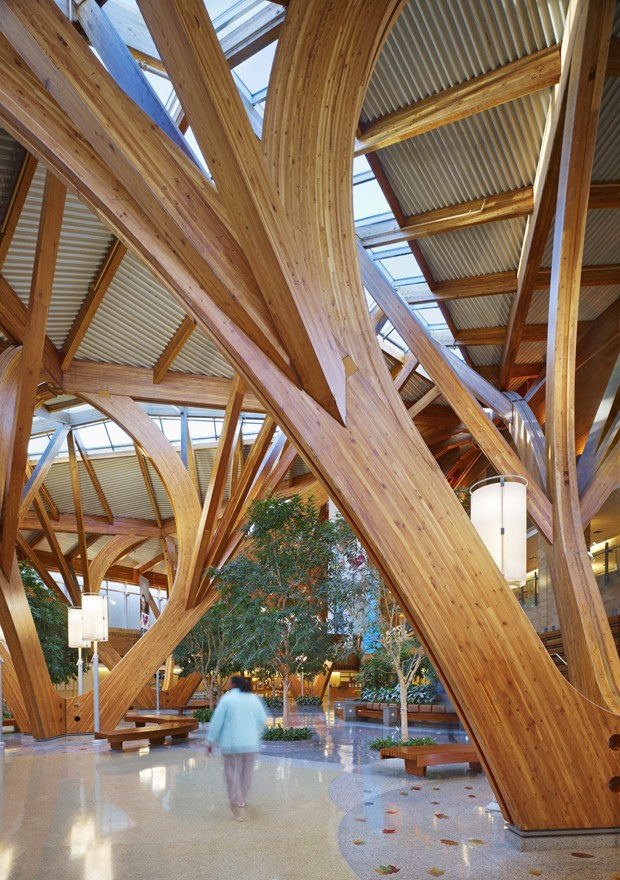
The Peel Regional Cancer & Ambulatory Cancer Centre features a piano in its lobby that, when played, would create a magical experience for visitors and staff, complementing their visual and physical journey around the wood structures. The shape of the ceiling and material selection optimise the room’s reverberations, but keeps the sound from being ‘too hard’.
LEVERAGING ACOUSTICS TO CAUSE HEALTH
When asked how architects can get acoustics right to create thriving healthcare environments, Farrow says design teams have to look at it on all levels.
“In sound, I suspect we often think about acoustics more from a functional, tangible standpoint,” he says, “but we also need to think about it in design as an aesthetic, or the intangible side of things.”
For instance, Farrow says timber is a good material for healthcare projects as it has been proven to raise spirits and reduce stress. At the same time, it can be used to reflect and absorb sounds. His team also uses more hard materials for certain projects, which negates the need to shape a room to prevent sounds from dampening – a stressful experience if occupants cannot hear someone talking or something that is happening.
“If we begin to think how we create and build our environments with both the tangible and intangible side of it, then you get a very rich experience that can enhance learning if you’re a student in the classroom, or healing if you’re a patient in a hospital.”
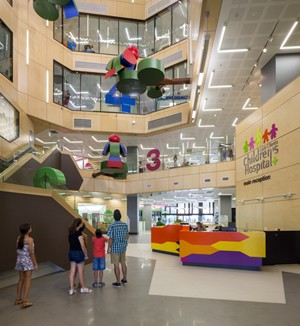
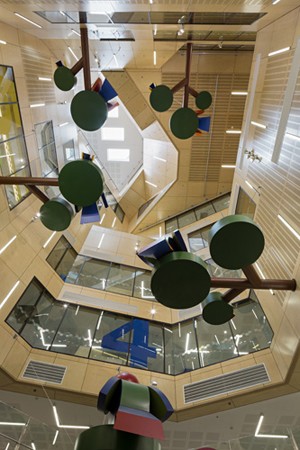
LADY CILENTO CHILDREN'S HOSPITAL by Conrad Gargett Lyons features timber veneered panels backed with insulation in selected locations in the public areas. Acoustic performance in walls and partitions was achieved with a combination of Knauf plasterboard and appropriate insulation by Fletcher, while the acoustic ceilings were either flush set plasterboard and perforated where required. Photography by Christopher Frederick Jones

